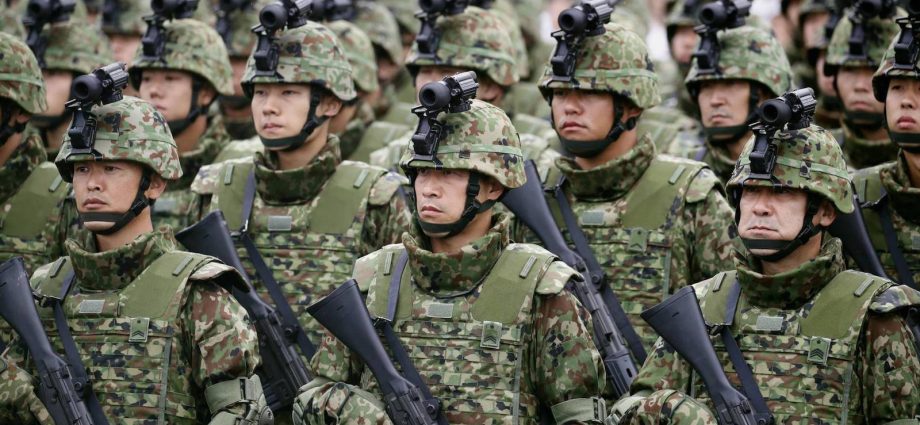The security environment in the Indo-Pacific has increasingly become volatile due to great power rivalry.
Australia’s latest Defense Strategic Review affirms that the “defense of Australia lies in the collective security of the Indo-Pacific.” Canberra will be keen to sustain and enhance its role in the Indo-Pacific, particularly to balance China.
Australia’s current capabilities under the “balanced force” model are insufficient to manage larger threats. For this reason, it is eager to pursue missile development and acquire advanced military equipment.
The review is an important step in evaluating capabilities and charting a course to lead Australia towards a more prominent position in the regional security architecture.
Beijing may be too occupied with larger goals of self-sufficiency, for areas like military engine development, to match US capacities. China enjoys an advantage in defense production, with its manufacturing base and regional supply chains.
But export controls and collective allied strategy can prevent it from acquiring sensitive technologies and assembling cutting-edge military hardware in the near future. While consolidation of logistics support has augmented its capabilities, China’s primary goal is advancement in defense technology, where the United States and its allies currently have an edge.
But an economic slowdown in China has led to its youth struggling for jobs. Some analyses find that the economic descent of a superpower causes domestic crackdowns — and greater military assertiveness in its neighborhood. Chinese policy may be driven by insecurity and distrust of competitors on the world stage.
China’s posture may be compounded by the threat of Japan’s military buildup in East Asia, and its consequences for the Taiwan Strait in the coming years. In such a scenario, the enhancement of Australia’s military power can also be perceived as a hostile threat, inviting adverse reactions.

In his book Asia’s Cauldron, Robert Kaplan observes that China perceives the South China Sea as its sphere of influence. Given the territorial disputes in the region, China remains anxious about its own security. It has increased military buildup to “project power” in its immediate security ecosystem.
The biggest concern for Indo-Pacific countries may be the military use of the island features reclaimed by China in the South China Sea. These facilities give Beijing an undue military advantage.
This is not only concerning for Australia due to the volatile bilateral relationship, but also concerning for the Philippines and Indonesia, which are claimants in the dispute. The alleged incursions into disputed areas by Chinese fishing fleets, accompanied by military vessels, have aggravated tensions.
China’s exploration of foreign basing facilities indicates military power projection outside its domestic territories, including in Southeast Asia. The possibility of a Chinese naval base in the Solomon Islands rattled Australia and the West in 2022.
China’s military presence in the Pacific can be problematic for two reasons: it will allow easy targeting of Australian territory and deny sea space to Australia. This effectively limits military support from the United States and Japan in dire situations.
Even as Canberra remains headstrong about its security interests and alignment with the United States, pockets of the Australian parliament have doubts about fighting an American war in the South China Sea. The recently released review talks of a “whole-of-nation” approach, in a bid to improve Australian public confidence.
Reservations about fighting an American war will be likely balanced by the benefits from the US alliance. This will mean continued support for the United States in areas like the South China Sea, although this may vary as domestic considerations are taken into account.
If an active military conflict in the South China Sea is to be averted, all security stakeholders —including China — must have a common denominator for discussions. This includes clear understanding of escalatory triggers induced by gray-zone tactics.
This may be possible when Beijing opens up to concerted dialogue aimed at building trust, with Southeast Asian partners at the primary level and the United States and regional powers at a secondary level.

Despite some resilience in their bilateral relationship in 2023 as well as recent deliberations on trade, Australia and China will remain pitched against one another due to enduring US-China competition in the region. Insecurities around the gap in military capabilities fuel Australia’s drive to modernize its defense industry.
A notable achievement of the new Labor government is the normalization in relations with China, despite a commitment to enhancing defense and strengthening cooperation with the United States and Japan.
As Australia does not want to antagonize China, greater diplomacy with Beijing can pacify bellicose reactions to Australia’s improved military capabilities. Australia’s improved capabilities are essential to maintaining regional power status and defense against national security threats.
Akash Sahu is an analyst in Indo-Pacific geopolitics and Southeast Asian studies. He leads an independent policy and strategy consulting practice from New Delhi.
This article was originally published by East Asia Forum and is republished under a Creative Commons license.

